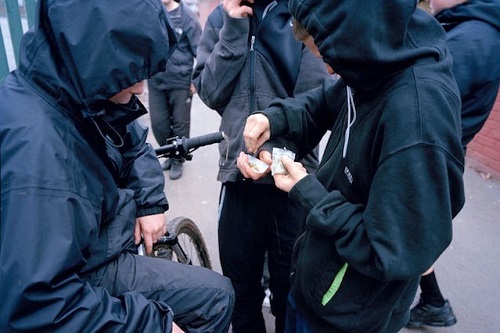By
Ricardo Swire
Britain’s cocaine market is worth no less than £2 billion.
The dismantling of an English drug kingpin’s empire was a major breakthrough for international anti-narcotics efforts. The sixty-one year old “Chief Executive Officer” of England’s version of “The Cartel” was intercepted attempting to traffic one and a half tons of cocaine worth £130 million aboard his luxury yacht. Although not original in name the English drug syndicate commanded similar fear and respect to Colombian and Mexican namesakes.
The Cartel is profiled as “Britain’s most evil multinational corporation.” Its headquarters in Liverpool oversaw satellite operations in Amsterdam, Spain, Portugal, Turkey and South America. In the drugs trade mecca Amsterdam The Cartel employed specialist burglars called “Creepers” to report progress of drug shipments. Employees, organized in a rigid corporate hierarchy, generated billions of dollars exclusively from drugs trafficking.
The criminal organization is managed by invisible godfathers who are wealthier than Virgin Atlantic’s billionaire owner. The Cartel’s tentacles extended from Mersey fog banks in northwest England to the city’s stock market trading floors and the British Charter Marbella Marina in Spain. The criminal syndicate’s first maritime super-load, of one thousand kilos of cocaine, was transported by a former Toxteth Liverpool sportsman. With no previous sailing experience he successfully navigated the trans-Atlantic voyage. After the cocaine’s arrival and delivery the Liverpool sportsman collected £7.5 million. The Cartel masterminds pocketed £50 million from the deal.
Liverpool Mafia, Britain’s original drug syndicate, aggressively competed with The Cartel for its North West power-base. Local counter-narcotics officers used a computer program called “Easydrugs” to monitor Liverpool Mafia members’ emails and telephone conversations. Law enforcers determined that traffickers’ secret messages were communicated person-to-person. Liverpool Mafia’s cocaine dealers used budget flights from Merseyside to contacts in Europe. Shipments were arranged and the Liverpool Mafia representatives returned the same day.
Merseyside Police is the only local force outside London to possess a level three capability, meaning officers possess the capability to tackle organized international crime. The Unit cautioned that Merseyside Mafia, or Liverpool’s cocaine barons, were heavily armed. Police intelligence deduced one thousand six hundred kilos of cocaine hidden in sardine tins, dispatched by Merseyside traffickers, interlinked with three thousand rounds of ammunition and two firearm silencers intercepted. The Cartel was forced to diversify to party drugs, such as Ecstasy and Speed, to remain relevant.
Its drug dealing nightclub doormen doubled as enforcers. They were the first to use hand-grenades and car bombs to settle local territorial disagreements. In one scene The Cartel’s enforcers detonated car bombs outside two Liverpool police stations, to pre-empt a major investigation. Police intelligence assigned ownership of a clandestine amphetamine factory, operating inside a Cumbrian holiday cottage, to The Cartel. The factory manufactured seven hundred and fifty kilos of speed worth £36 million.
Concurrent to The Cartel top executive’s detention three members of Britain’s Serious Organized Crime Agency (SOCA) rendezvoused with American Federal Agents on the Texas/Mexico border. The law enforcement integration consolidated tactics to halt Mexican drug syndicates attempts to control Britain and Europe’s cocaine supply. Another of The Cartel’s favorite trafficking methods was use of shipping containers. Via this medium firearms and explosives accompanied imports from Africa, China and South America.
One thousand kilos of cocaine loaded in a forty-foot container left significant space for guns and hand-grenades. After consignments arrived The Cartel’s operatives conducted routine inspections to ascertain if the shipments were tampered with by Customs or law enforcement. Each container carried a looped shaped piece of aluminium or hard plastic official seal. When a new clean seal was attached it implied the container was recently entered. If the original seal was attached a finger rub would show grime, sea salt or diesel remnants. The Cartel flew teams of welders around the world to attach secret metal compartments to ships’ cargo holds. Alternatively, contracted scuba divers bolted drug filled “torpedoes” to the ships’ hulls.
Ricardo Swire
Ricardo Swire is the Principal Consultant at R-L-H Security Consultants & Business Support Services and writes on a number of important issues.



No Comments Yet!
You can be first to comment this post!